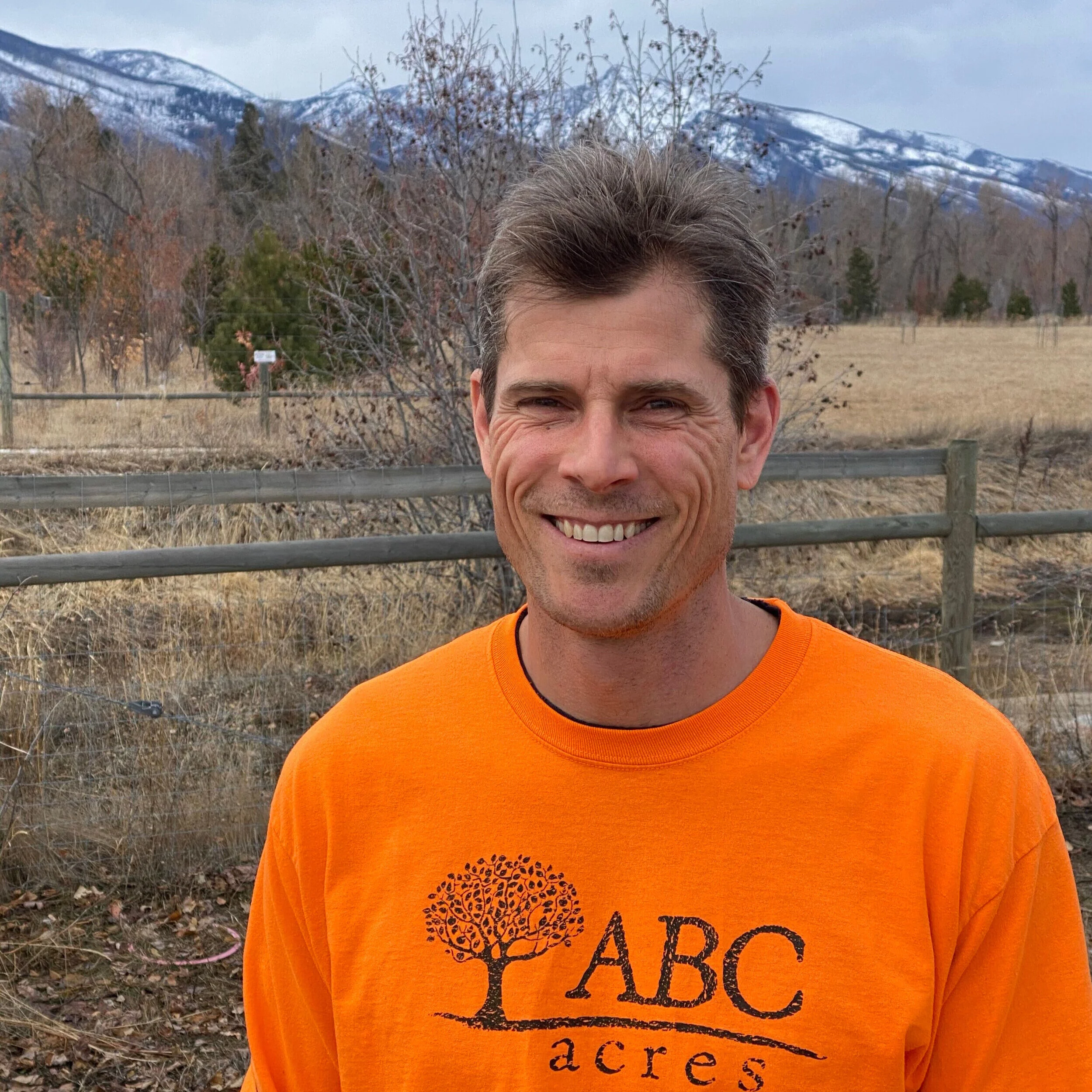Tim Southwell of ABC Acres in Montanna talks about a regenerative approach to farming, family, community—and about his crater garden.
“Our chickens know no boundaries.”
We head to Montana to chat with Tim Southwell of ABC Acres, the permaculture homestead he and his his wife Sarah created.
Southwell, who grew up in suburban Houston, explains that it was while living in Kansas City and growing a front-yard vegetable garden that he was introduced to permaculture and many of the concepts that he uses today on the farm.
In addition to livestock, they have a crater garden, a food hedge, chinampas, and a sunken greenhouse with citrus, bananas, figs, and papaya.
The unique microclimate created by the crater garden permits them to grow apples, peaches, plums, nectarines, and apricots in their harsh climate. He explains, “Every fruit tree we have, we build with it a microclimate.”
Crater Garden
Southwell says that the microclimate in the crater garden—a below-grade garden—is created by a number of things that work together:
The winter sun warms the south-facing slope of the garden.
Runoff from rain collects at the bottom of the garden, creating a pond—and the water in the pond collects heat that is then radiated at night.
The water reflects light onto plants in the surrounding crater garden.
Because the garden is below grade, cold winds pass over top of it.
While frost normally settles into low areas, it does not settle into the crater garden because the thermal mass of the water creates convection, so the air keeps moving.
Large rocks are partially submerged in the pond to act as “battery chargers” in the pond, adding to the thermal mass.
Food Hedge
The food hedge, which Southwell calls the “fedge,” provides privacy, blocks wind, attracts birds, and keeps livestock where they are supposed to be. Food plants in the fedge include:
brambles
sand cherry
serviceberry
goji
aronia
josta
honeyberry
“My children will be outside grazing the food hedge.”
Chinampas
Southwell explains that he was inspired by systems used by Aztec famers to create “chinampas” on a boggy section of flood plain.
He placed cottonwood logs on the low-lying ground, and then capped them with old hay and leaves, which decompose to create a rich soil. Over time, the decaying, spongy cottonwood logs help to wick moisture upwards.
He says that in this sort of situation it’s important to grow plants that don’t mind moisture. Raspberries grow well for them.
Agritourism
Agritourism become an income generator on the farm in 2017. Southwell noticed a big appetite for opportunities to connect with farms, food production, and nature.
But he felt that farms, and the stories behind them, were poorly represented online. He and Sarah created the online platform yonder.com as a way for to connect people with nature.
Connect with Tim Southwell
Farm Website: abcacres.com
Agritourism Website: yonder.com
YouTube: ABC Acres YouTube Channel


